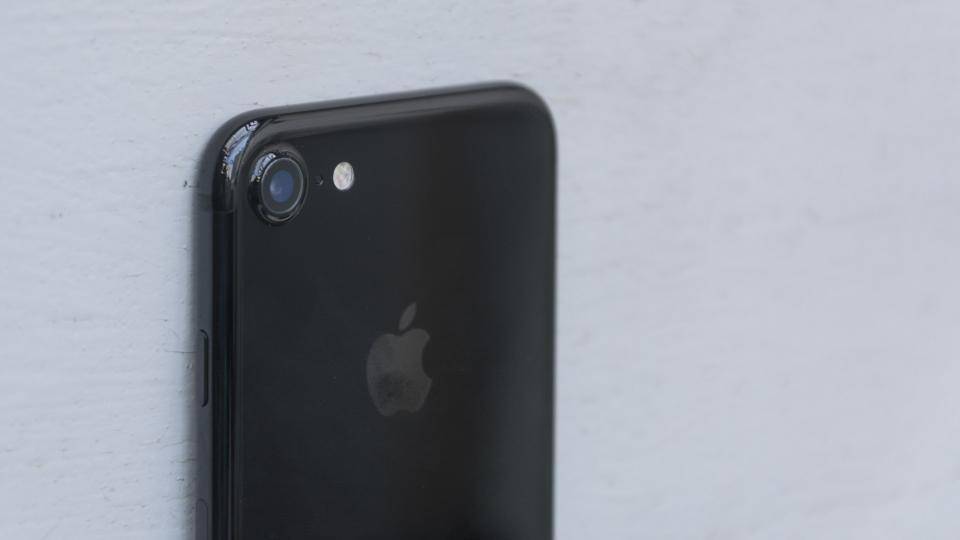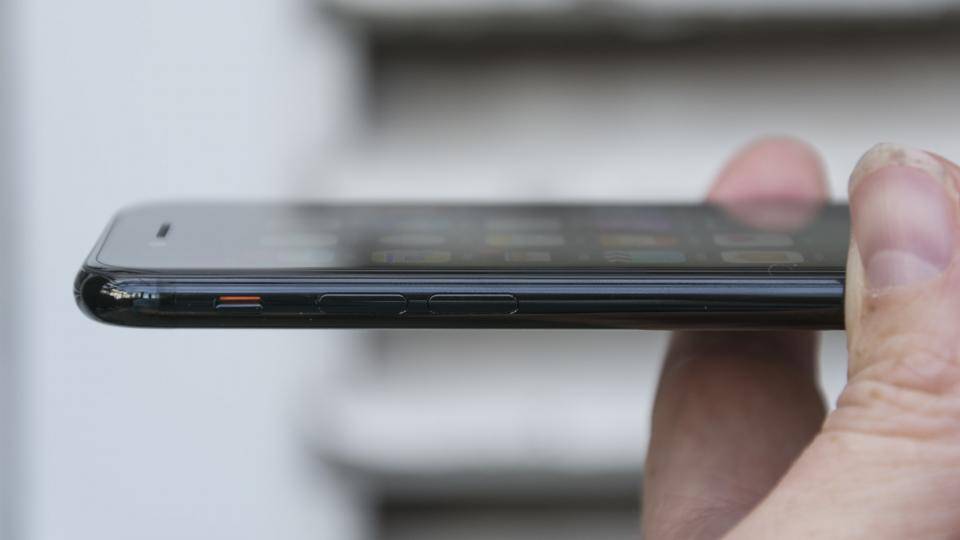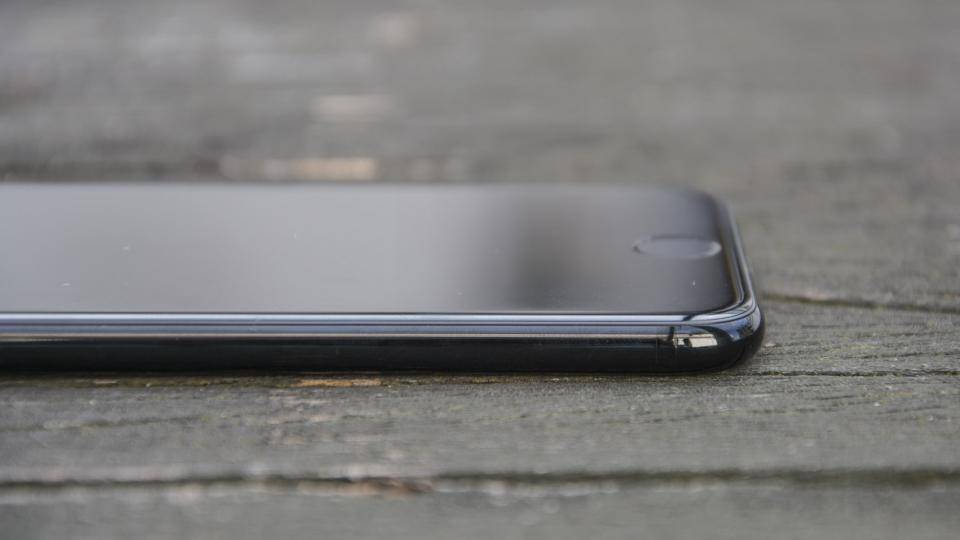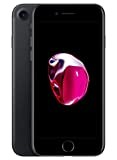The iPhone 7 was a fantastic phone when it first came out in September 2016, but that’s over two years ago now. Although its successor, the iPhone 8 , was overshadowed by the iPhone X and has now been replaced by the iPhone XR , it's still a better phone in every sense of the word.
Not only does the iPhone 8 pack a newer, faster A11 Bionic chip, but it also has Qi wireless and fast-charging capabilities, an all-glass back, and a True Tone HDR display. Its camera also has superior post-processing, helping it to produce superior snaps in all conditions. In our opinion, there are enough improvements to justify buying an iPhone 8 instead.
The main reason we'd advise stumping up the extra cash, however, comes down to the iPhone 7's age. In the world of smartphones, there’s such a vast amount of change in so little time. And two years is simply too long. Apple continues to push out software updates to its older devices for several years, but it's no secret that these updates can result in your trusty phone or tablet feeling considerably slower overnight.
READ NEXT: iPhone XR vs iPhone 8
Apple iPhone 7 review: Price and competition

Whereas the 128GB iPhone 7 costs £549 on the Apple store , the 64GB iPhone 8 is only £50 more at £599. Although the iPhone 8 is a year old, we still highly recommend it, especially after its decent price drop in the wake of the iPhone XR reveal at Apple's 2018 September Event .
If you really wanted the cheapest iPhone possible, you could opt for the 32GB iPhone 7 for £44 9 at the Apple store, but spending that amount of money on such an outdated device is really not advisable.
The iPhone 8 occupies the middle ground between the ancient iPhone 7 and the more expensive new iPhone XR , which runs from £749 for the 64GB all the way up to £899 for the 256GB configuration.
Best iPhone 7 contract and SIM-free deals
Apple iPhone 7 review: Storage
With the iPhone 7, Apple finally listened to reason and ditched the baseline 16GB storage option. We'd long complained about how 16GB just isn't enough space for a modern, flagship handset, so it was welcome to see 32GB as the new starting point.
The other storage options doubled in size too, and if you grabbed the 128GB or 256GB model you also got the option to buy the iPhone 7 in its extra shiny Jet Black finish. That has no changed, however; on the Apple store, only the 32GB and 128GB models are available, but you can get both with black, silver, gold or rose finishes.
It's a shame there was no 64GB option to provide some sort of middle ground, but overall this is definitely a step in the right direction. Of course, the iPhone 8 starts from 64Gb and goes up from there.
Our original review from 2016 continues below.
Apple iPhone 7 review: Design
The aforementioned Jet Black version, however, takes several strides backwards. It’s now more prone to picking up mucky fingerprints than its matte siblings, and it's also considerably more slippery to hold. I never felt confident holding our Jet Black review sample, and I was constantly afraid I was going to drop it.

Apple itself has warned customers that the Jet Black's polished finish is more likely to pick up scuffs and scratches than the plain Black, Silver, Gold and Rose Gold options, advising that you invest in a case to keep it in pristine condition. In my eyes, this rather defeats the point of buying one with a flashy back in the first place.
Apple iPhone 7 review: Home button
The newly redesigned home button also takes some getting used to. This time around, Apple's replaced the mechanical aspect of the iPhone 7's home button with a similar kind of capacitive Force Touch technology found in its MacBook and MacBook Pro products. Rather than pressing inwards with a standard click, the button now simply vibrates whenever you apply any pressure, giving you enough feedback to let you know you've pressed it properly without moving anything inside the phone.

This should hopefully make it less likely to break and fail after prolonged use, but given Apple's heavily reliance on using the home button to navigate its iOS operating system, I didn't find it quite as easy or as intuitive to use as its old click buttons. Putting the phone on a flat surface, you'll notice the buzz's effectiveness is reduced somewhat, too. It still works, but it's nowhere near as beefy.
It also doesn't work with gloves, which isn't particularly good news when the winter months are drawing in fast. We've tried a number of different gloves to test this out, and while some touchscreen gloves did work, the vast majority didn't, so be prepared to brave the cold when you're using your iPhone 7 this winter. It's even more vexing now that iOS 10 doesn't let you get to the PIN screen unless you press the home button, as swiping to the right and left only bring up the camera and search screens respectively.
Apple iPhone 7 review: Waterproof protection
A more welcome addition is the iPhone 7's improved water and dust protection. Its IP67 rating means you can now drop the phone in up to a metre of water for up to 30 minutes without damaging its internals. This makes it much more practical to use on a daily basis, as you no longer need to worry about accidentally dropping it down the loo or getting caught using it during a heavy rain shower.
Apple iPhone 7 review: Display
One thing that hasn't changed is the screen size and resolution. Just like the iPhone 6 and iPhone 6s before it, the iPhone 7 has a 4.7in display with a 1,334 x 750 resolution. That doesn't necessarily mean there are no improvements at hand, however. The iPhone 7 now has a wide colour gamut display, which allows it to reproduce brighter, more intense shades of colour. And as an extra bonus, its panel is now a claimed 25% brighter than the display on the iPhone 6S.
When I compared both phones side by side at maximum brightness, the difference was plain to see. Colours on the iPhone 7 looked much richer and punchier, and blacks were noticeably darker. However, I had a hard time replicating Apple's quoted brightness figure of 625cd/m2, as I couldn't coax my colour calibrator any higher than 540cd/m2, which is actually lower than the 580cd/m2 we managed on the iPhone 6s. That's still more than enough to see the screen clearly outdoors, but it's not quite as good as I'd hoped.

It’s difficult to properly benchmark the iPhone 7’s display, however, since it only uses this wider palette of colours in applications that specifically support it. As all our display tests are run in an Opera browser window – sadly, Safari just doesn’t play ball with our testing software – the iPhone 7 automatically defaults to the standard, or narrow, sRGB colour gamut. This is, quite sensibly, so that images on the web don’t end up looking overblown and unnatural.
Even in this scenario, though, the iPhone 7 is still supremely accurate. It reproduced 95.8% of the sRGB colour gamut – not quite as high a figure as the best Android handsets, but the quality of those colours means that it is more accurate than most. Going by DisplayCAL’s measurement report, the display isn’t far off what we’d expect from a professional desktop monitor. It’s fair to say that Samsung’s flagship Galaxy S7 and S7 Edge still nudge slightly ahead overall, but this is still a step up for Apple.
Apple iPhone 7 review: Camera
The iPhone 7’s new, improved camera isn’t as immediately impressive as its specs might suggest. While its 12-megapixel sensor has been improved since the iPhone 6s , introducing optical image stabilisation, a brighter f/1.8 aperture that lets 50% more light into the new, six-element lens, and a quad-LED flash, my initial test shots didn't blow me away.
Outdoors, the iPhone 7 produced brighter colours and better-contrast shots than the iPhone 6s, but indoors things didn't quite pan out as expected. While our still-life arrangement was, on the whole, sharper, crisper and richer on the iPhone 7, shadow areas were extremely blotchy, which in turn affected the edges of our still-life objects.
Our wooden mannequin, for instance, revealed some very smeary, jagged outlines that simply aren't present on our iPhone 6s comparison shots. The iPhone 6S, on the other hand, arguably showed more noise, but the end result was much cleaner and pleasing to the eye. This is probably something Apple can fix with a software update, but it's clear from our test shots that the improvements the iPhone 7 offers are pretty minimal.
Apple iPhone 7 review: Performance
Where you're more likely to notice a difference is the iPhone 7's day-to-day performance. Powered by Apple's new quad-core A10 Fusion chip, the iPhone 7 is noticeably quicker than its predecessor. It scythes through iOS 10 far more smoothly, and the speed boost is particularly noticeable in the way that it springs back to the homescreen.
It showed in our benchmark results as well, with the iPhone 7 finishing way out in front of the 6s in Geekbench 4. In the single-core test, for instance, the iPhone 7 scored 3,489 (up from the 6s's 2,493) and it scored a massive 5,652 in the multi-core test (again, up from 4,102 on the 6s). That’s hugely impressive, and just nudges in front of the S7 and S7 Edge .
Graphics performance was excellent, too, finishing GFXBench GL's offscreen Manhattan 3 test with an average frame rate of 62.6fps. That's the highest score I've ever seen, so you can be pretty sure the iPhone 7 will run anything you throw at it.
All things considered, the performance is excellent but it does come at a slight cost. I've had the iPhone 7 with me pretty much non-stop since release and I've noticed an audible hissing noise coming from just behind the Apple logo on the back of the phone, which is pretty much when the new A10 chip lies. It's not exactly deafening, but it's definitely more audible during heavy processing bouts. It's likely to be caused by some of the electrical capacitors hitting a specific resonant frequency, causing a slight internal rattle, but I'll update this review with more information as soon as I've been able to do a bit more investigating.
Apple iPhone 7 review: Battery life
For all that raw processing power, the A10 Fusion is also meant to introduce significant energy savings compared to its A9 predecessor, extending the iPhone 7's battery life by two hours compared to the iPhone 6s. This is thanks to its two "high-efficiency" cores, which allegedly run at a fifth of the power used by the pair of "high-power" cores. This bore out in our battery-life tests, too: the iPhone managed 13hrs 2mins in our video-playback benchmark – almost two hours more than the 11hrs 18mins we got from the iPhone 6s.
It's still not particularly brilliant compared to its Android rivals, however: the Galaxy S7 is miles in front with its 17hrs 48mins, not to mention the S7 Edge with its 18hrs 42mins. As a result, it's clear Apple's still got some way to go before it can compete with the top Android phones, but at least it's an improvement on last year's iPhone.
Apple iPhone 7 review: Verdict
There's no denying the iPhone 7 is a great smartphone, but none of its improvements are quite as impressive as I'd hoped – it feels more like an iterative S update than the next big evolutionary leap. It's certainly raised the bar for iPhones a little higher, but in many ways it's still catching up with its Android competitors, as neither the camera nor display is quite as good as the very best.
For me, Samsung's S7 family are still the phones to beat, but the iPhone 7 certainly isn't far behind. The only problem is the price. A lot of the contracts I've seen so far involve a significant upfront cost as well as a hefty £50-per-month fee thereafter. The S7, on the other hand, can be picked up for around £34-per-month with no upfront cost, providing a significant saving over the course of two years.
However, if your allegiance lies firmly with iOS, then the iPhone 7 is definitely the best iPhone you can buy today. With its increased battery life, superior speed and better-looking display, the iPhone 7 offers a decent bump over the iPhone 6s, and a significant improvement over the now rather elderly iPhone 6. All of which makes it a very satisfying upgrade if your contract's coming to an end.
That said, if the new prices are just a little too high for you, then I'd recommend buying a new iPhone 6s instead – particularly now that Apple's bumped up the storage and dropped the prices to £499 and £599 respectively.
|
Hardware |
|
Processor |
Quad-core A10 Fusion |
|
RAM |
Not stated |
|
Screen size |
4.7in |
|
Screen resolution |
1,334 x 750 |
|
Screen type |
IPS |
|
Front camera |
7 megapixels |
|
Rear camera |
12 megapixels |
|
Flash |
LED |
|
GPS |
Yes |
|
Compass |
Yes |
|
Storage (free) |
32GB, 128GB, 256GB |
|
Memory card slot (supplied) |
None |
|
Wi-Fi |
802.11ac |
|
Bluetooth |
Bluetooth 4.2 |
|
NFC |
Yes |
|
Wireless data |
3G, 4G |
|
Dimensions |
138 x 67 x 7.1mm |
|
Weight |
138g |
|
Features |
|
Operating system |
iOS 10.0 |
|
Battery size |
Not stated |